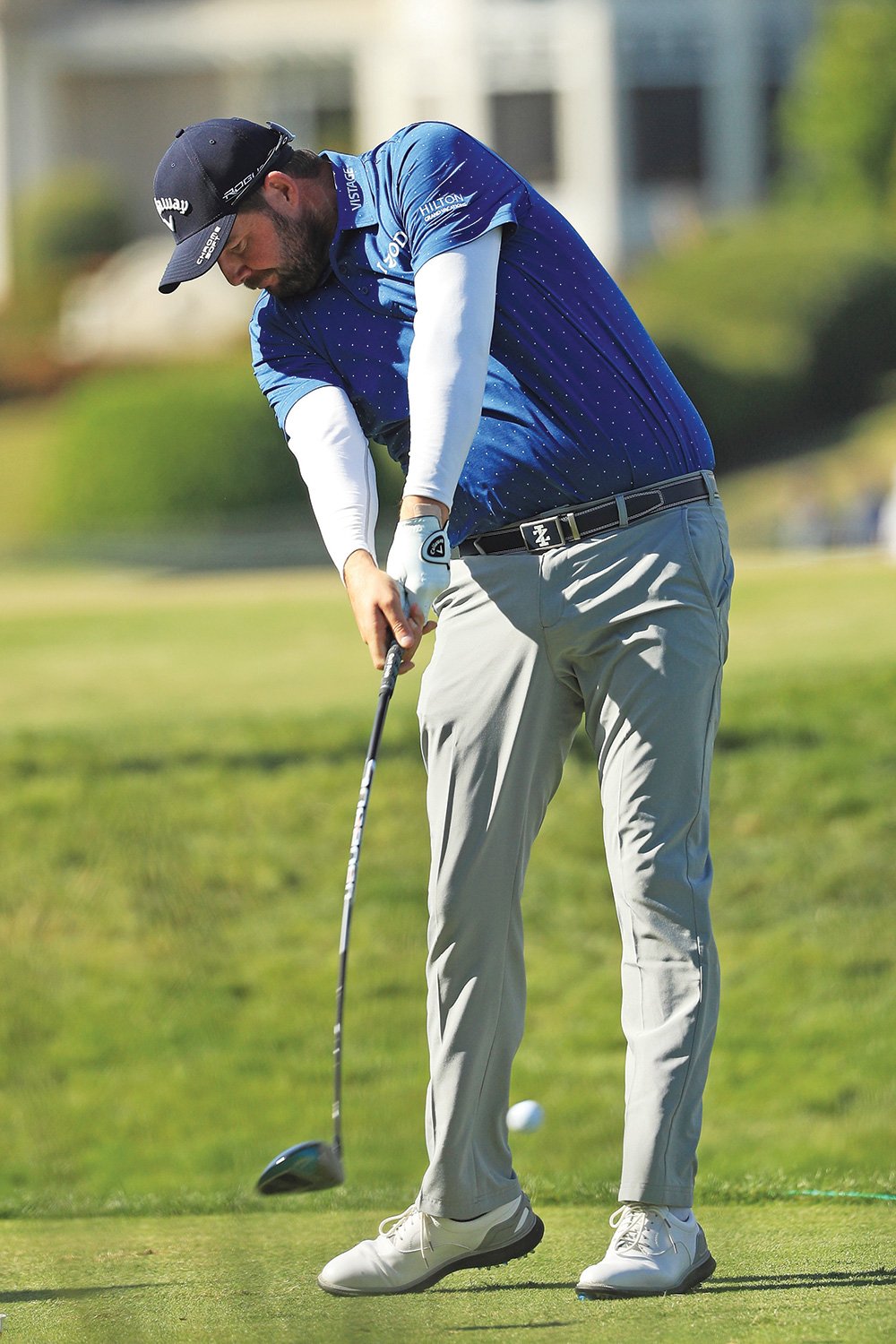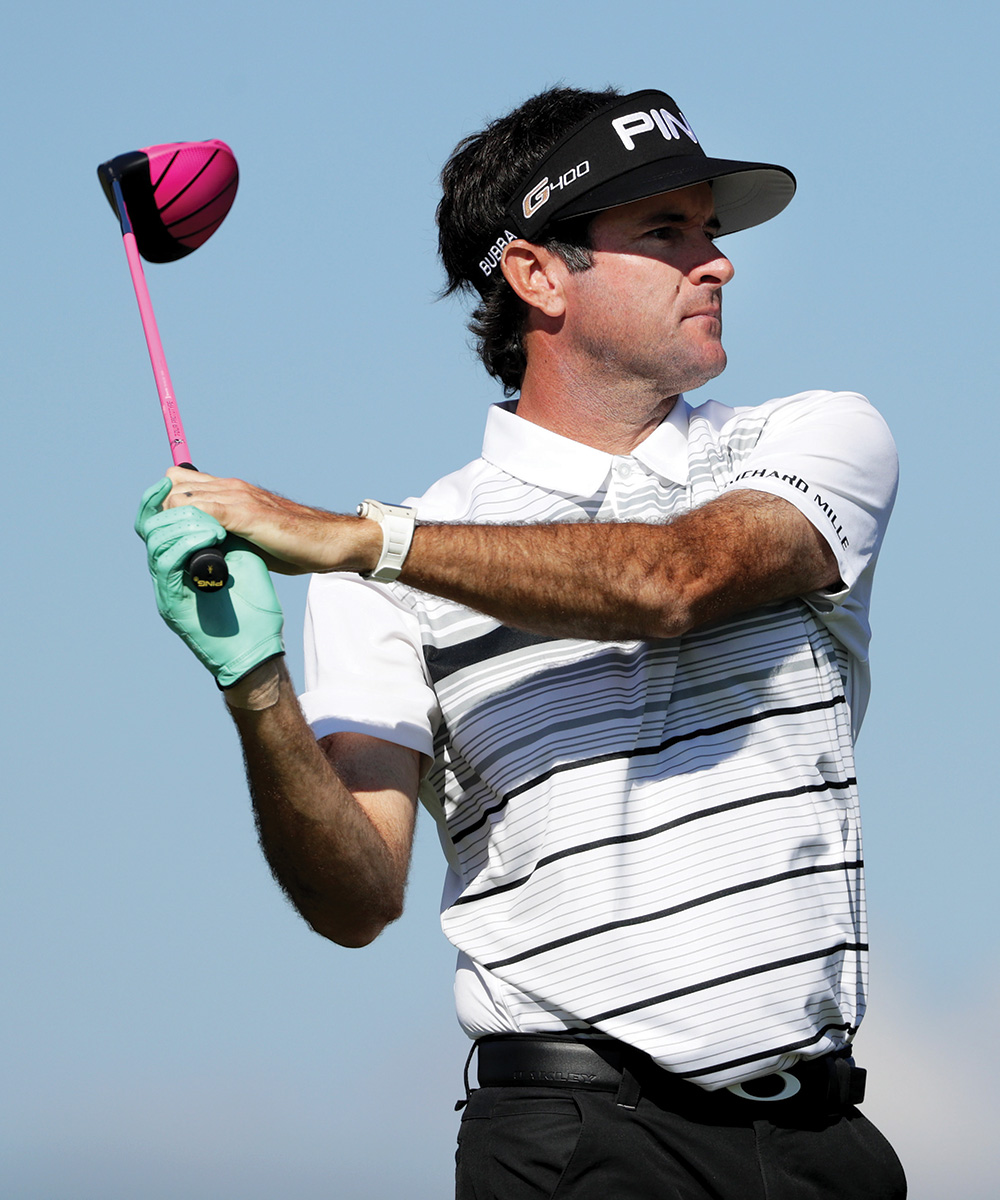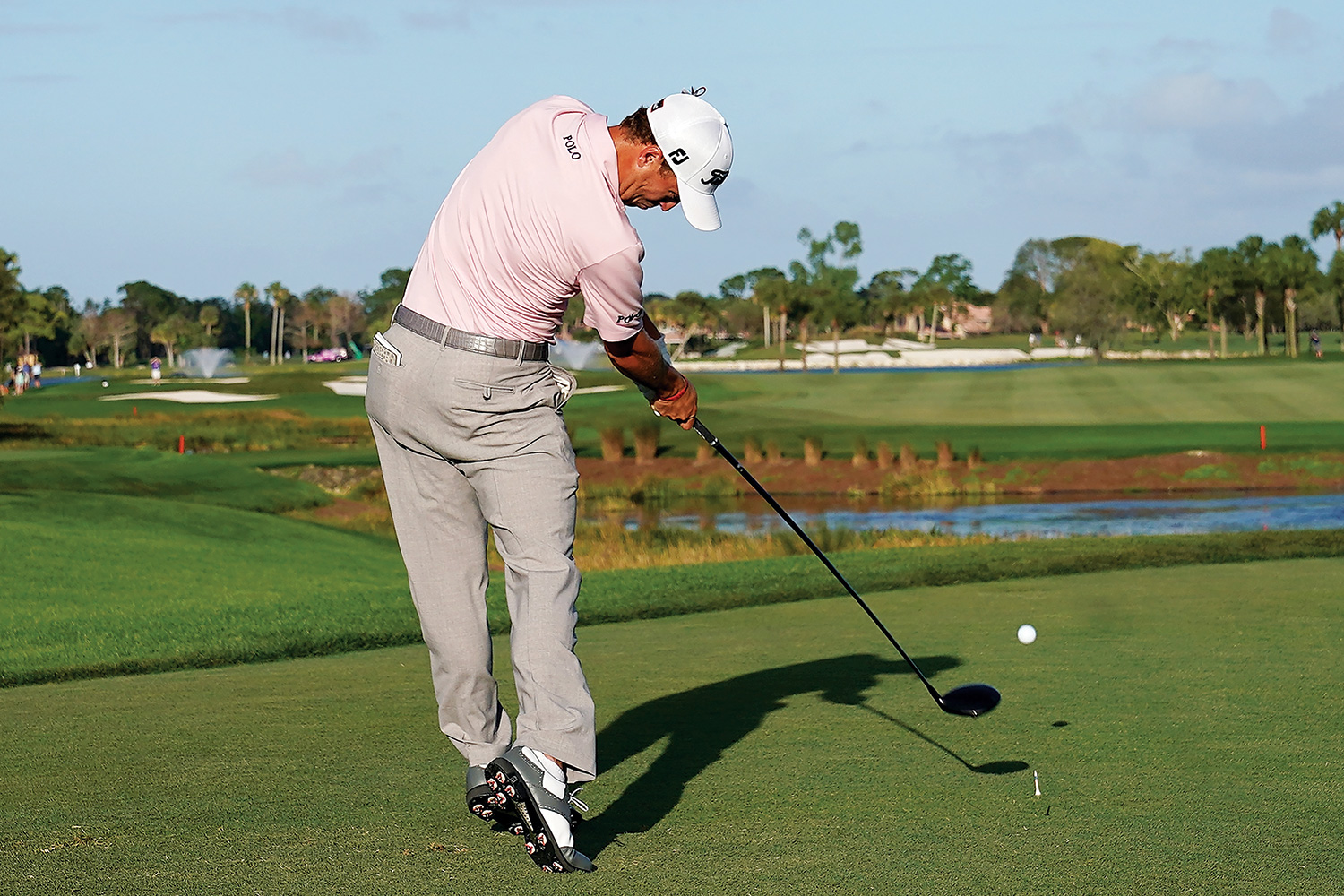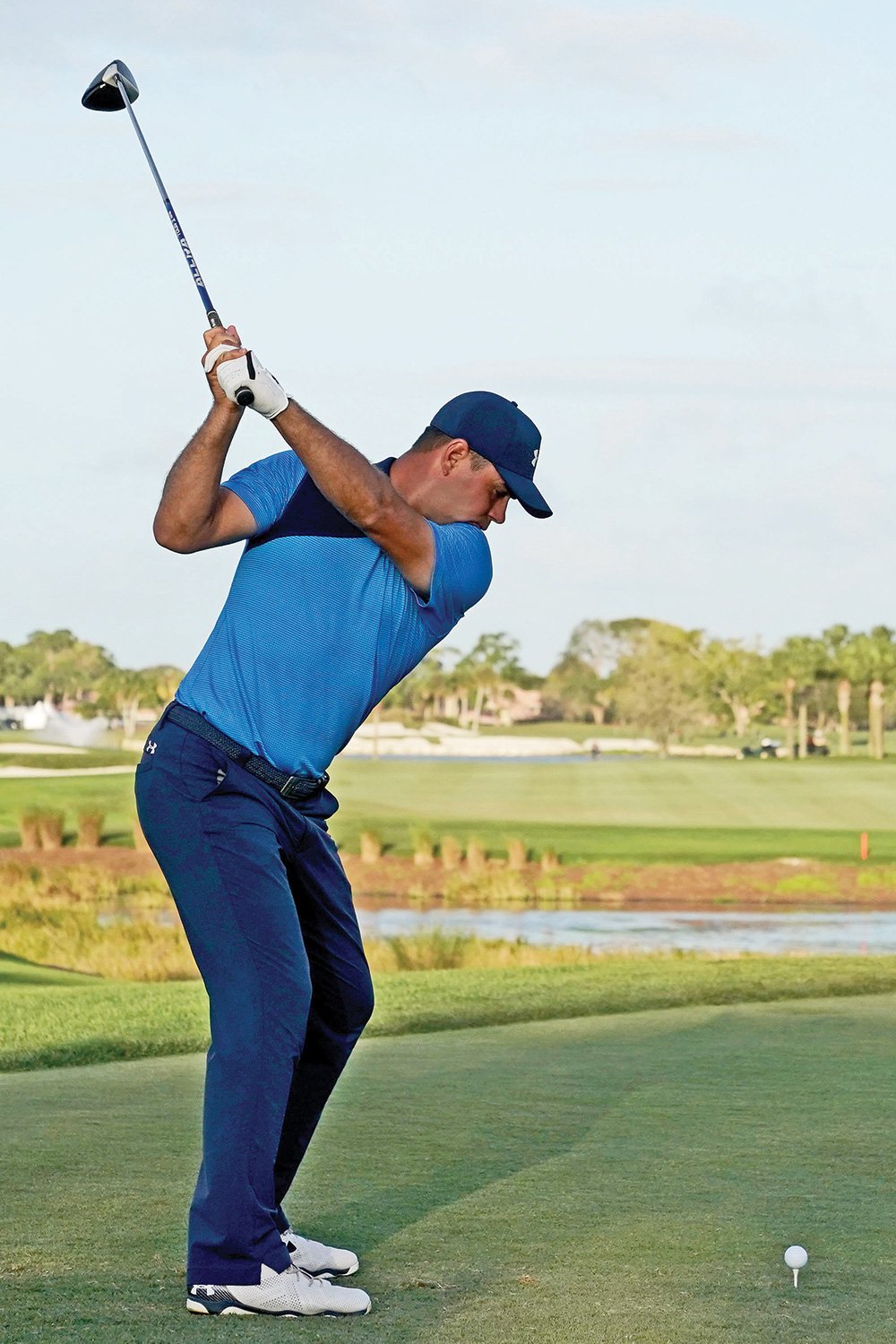What you can learn from five of the biggest hitters in world golf.
1. Create power with minimal effort like Rory McIlroy
Fit your golf swing around your body type
How do tour players hit the ball so far, and with different swings and body types? They hone a technique suited to their physique, and few exhibit this quality better than Rory McIlroy – as evidenced by his dominant finish to win the Arnold Palmer Invitational at Bay Hill in March.
“McIlroy has a model golf swing, creating incredible power with very little effort,” says Newcastle-based teacher Jason Laws. “The first move down in his swing is his power move. McIlroy increases his left knee flex as he moves to his left side, which shifts more pressure to his lead foot to increase speed and power from the ground up. This move gives Rory his distance with an average drive of 286 metres (312 yards).”
2. Get your driver in gear like Marc Leishman
A simple setup tweak will give you more speed

Driving was a big piece of the puzzle for the 34-year-old Victorian in 2017. Leishman averaged 273 metres (299 yards) off the tee while hitting nearly 60 percent of his fairways. “It starts with his setup,” says top Alabama-based teacher Tony Ruggiero. “From face-on, his hips and shoulders run parallel to each other, which means his left hip is slightly higher than his right at address, just like his left shoulder is higher than his right. This slight spine tilt with matching shoulders and hips is what helps him get completely wound up.”
Average players run into two common problems, says Ruggiero. They have mismatched angles between their hips and shoulders, or they get the two matching, but have them level. “Either problem will keep you from winding up and hitting the ball with power and accuracy.”
Leishman’s sequencing also lets him produce effortless power. “From that setup, his trunk and arms move together away from the ball at the same speed,” says Ruggiero. “Too many players begin from that compromised setup position and start the backswing with the arms going way too fast in relation to the body. The swing gets out of sequence from the start, and you spend the rest of it trying to get organised again.”
3. Embrace your curves like Bubba Watson
Get out of your pattern by exaggerating the opposite miss
 Shot tracers on Bubba Watson’s tee shots don’t look like anybody else’s. Start with the whole left-handed thing and keep going to the prodigious distance and the willingness to hit giant banana curves that would make a straight hitter nauseous.
Shot tracers on Bubba Watson’s tee shots don’t look like anybody else’s. Start with the whole left-handed thing and keep going to the prodigious distance and the willingness to hit giant banana curves that would make a straight hitter nauseous.
It’s hard to argue with the results. In February Watson won at Riviera Country Club for the third time, winning the WGC-Dell Matc h Play a month later for his 10th and 11th US PGA Tour victories.
Despite the 300-metre driving average and $US40 million in career prizemoney, Watson has an approach the average 15-handicapper could easily – and profitably – copy, says Michigan-based teacher Jason Guss. “One problem a lot of weekend players have is getting stuck hitting the same bad shot over and over again,” Guss says. “Bubba never has that problem, because he’s willing to hit a dramatic curve in the other direction.”
If you can hit a dramatic curve in the other direction, says Guss, you can effectively hit the reset button on your swing. “Everything we have today, from smartphones to computers, has a reset button. Your golf swing should, too. Making a big curve in the opposite direction of your normal miss will help you push
that button.”
Watson is famously self-taught, but one aspect of his technique could come right out of a teaching handbook, says Guss. “From a technical standpoint, I love the fact that his backswing plane is steeper than his downswing plane. Most people I see have the opposite swing. Most of the great players in golf have had this trait. If you can take just a hint of his creativity and technique, you’ll get better right away.”
4. Stabilise your clubface like Justin Thomas
A solid pivot is vital for controlled ball-striking
When Justin Thomas hits a golf ball, the first thing your eyes move to is the launching effect of his feet. After all, this is a little bloke hitting a ball an incredibly long way. Thomas was true to form in winning the Honda Classic earlier this year, averaging 293 metres off the tee on his way to beating Luke List in a playoff.
But pure clubhead speed isn’t the only reason the 5-foot-8 (173-centimetre) Thomas has been one of the hottest golfers on the planet over the past 18 months. “A lot of players can swing fast,” says Ruggiero, who works with Lucas Glover and Tom Lovelady, among other tour players. “Justin is able to control the ball in the wind and through difficult course conditions because he has control of the clubface.”
“A lot of players can swing fast,” says Ruggiero, who works with Lucas Glover and Tom Lovelady, among other tour players. “Justin is able to control the ball in the wind and through difficult course conditions because he has control of the clubface.”
The secret to that control? A good pivot, says Ruggiero.
“Justin’s body unwinds from the ground up, and the rotation of his body delivers the club – where most amateurs are delivering it with their hands and arms. The way Justin does it, you don’t see the clubface flipping or rotating much. That’s why he hits it so solid, and has such good control.”
To get some of that in your game, use your pitching wedge to hit some pitch shots with a tee poking out of the flap in your glove. “Work on turning the back of your glove so that the tee is pointing at the target at impact,” says Ruggiero. “Hit those shots focusing on going through the ball in the right order: hips, chest, grip and then clubhead. When you have the right hand action combined with a good pivot, you’ll have so much more control over contact and direction.”
5. Find this swing checkpoint to bomb it like Gary Woodland
Use your shadow as a guide to improving your swing path
 If you don’t think distance matters, Gary Woodland would like to have a word with you.
If you don’t think distance matters, Gary Woodland would like to have a word with you.
The reigning Waste Management Open champion had 80 metres into the 405-metre 18th hole in regulation, and was able to effortlessly make the 270-metre carry necessary to take the water out of play on the same hole in his playoff with Chez Reavie. Woodland would make two pars to outlast Reavie, who was 20 metres behind the long-hitting Woodland off the tee.
Of course, it’s easy to bomb it when you have more than 120 miles per hour of clubhead speed, like Woodland does. But no matter how fast you swing, you can max out your driver by doing one of the basic things Woodland does so well. “Gary is able to keep the path of his hands and the clubhead in close proximity to each other during the whole swing,” says top Illinois-based teacher Rick Silva. “That’s one of the ‘hidden’ fundamentals that makes a swing look so smooth and effortless – and it lets him create a lot of power.”
To check your own swing, get a friend to make a video from down the line – filming from right along the target line. “When you look at Gary’s backswing from this angle, the clubhead moves right ‘through’ the hands and the shaft points slightly inside the ball line,” Silva says. “Many players pull the club inside on the backswing so that the clubhead gets behind the hands and the butt of the club points well outside the ball line. That’s when players get into trouble trying to manipulate the club to try to lay it down into a flatter plane in transition for the downswing – and all that re-routing makes you swing slower and have trouble hitting the centre of the face.”
Once you’ve checked the video to see where your hands and clubhead go, you can correct your motion and then use your shadow as a reference point for where your hands and club should be going. “When you do it right, the club will feel lighter in your hands, and your clubhead speed will increase dramatically.”



